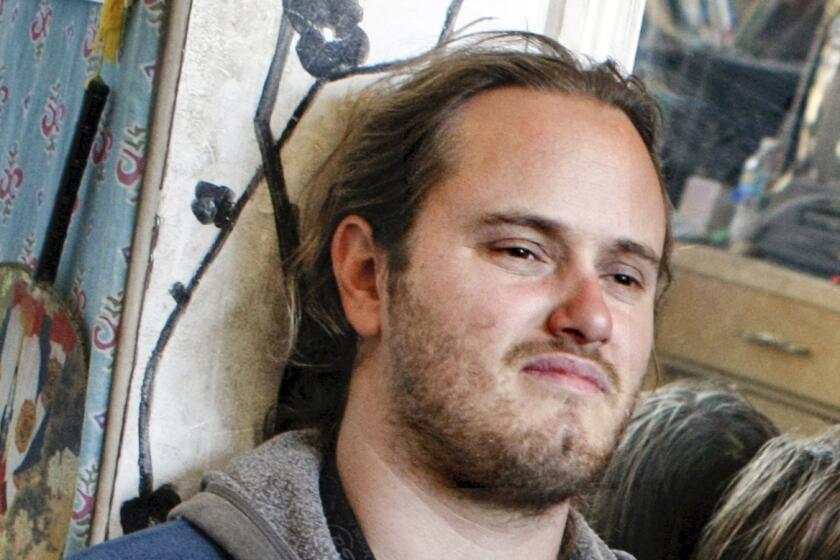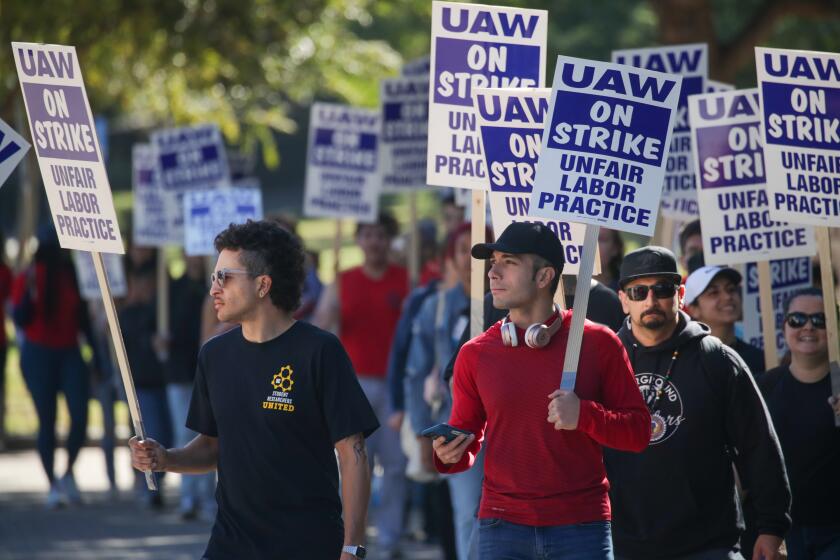They came, they bought furniture, they stayed
San Marcos is known as a good place to eat or to buy a sofa, thanks to James R. Eubank, who saw the city’s potential as a retail hub. He bought land on San Marcos Boulevard in the 1970s, when the north San Diego area had little but dusty chicken ranches, and opened two adjacent restaurants. This paved the way for a booming restaurant row and other businesses.
*
Beginnings
Legend has it that a small band of American Indians routinely raided the livestock of Mission San Luis Rey in the 1700s, prompting a call for help from Spanish troops. With the army at their heels, the raiders escaped into the hills. Mid-pursuit, the Spaniards were stopped in their tracks by the beauty of a fertile valley, which they named Los Vallecitos de San Marcos (Little Valleys of St. Mark) on April 25, 1797.
Mexican Gov. Juan Batista Alvarado granted the land to a relative in 1840. It changed hands many times and was homesteaded in the 1870s by Maj. Gustavus Merriam of Topeka, Kan., who began wine and honey production. German and Dutch immigrants soon followed.
Farming was a big business in the early 1900s, followed by dairy and poultry by midcentury.
The small, sleepy town got a wake-up call in 1956 when water became available from the Colorado River. This brought more business, and the population hit 2,500. The city, today home to about 67,000 residents, was incorporated in 1963.
Drawing card
San Marcos is spread over 34 square miles of rolling hills and valleys. The city has eight neighborhoods, including long-established areas with older homes as well as blocks of new tract houses.
The Twin Oaks Valley neighborhood is a standout with open farmland, horse properties, ranch-style homes and a lush golf course. San Elijo Hills is a new master-planned community terraced into the mountains at the city’s southwestern edge. When completed, it will have about 3,400 homes anchored by a new town center with stores, restaurants and schools.
Old California Restaurant Row functions as a de facto downtown and features more than 20 eateries and several stores covering a block-wide square. The Old California Mining Company steakhouse, with its large waterwheel and mining shtick, sets the tone for the square. Another draw is Furniture Row, a milelong stretch just off Highway 78.
San Marcos is the center of higher education for San Diego’s North County, with two colleges: Palomar College has been around for more than 57 years; Cal State San Marcos for 15 years.
Recreational opportunities include golf courses, parks and hiking trails.
Good news, bad news
With new communities and the growth of the university, the city is coming into its own. Changing demographics are being felt as well.
“The new housing developments are transforming the city into more of a trendy place to live,” said real estate agent Christy Thompson. “We are seeing more youthful couples, families and many singles moving into the community.”
Although there are many restaurants and furniture stores and some big-box retailers including Wal-Mart, Fry’s Electronics and Lowe’s, there is no true city center, downtown or central shopping area. For upscale shopping, residents drive to nearby cities.
Traffic is also an issue, with San Marcos Boulevard and the 78 highway often crowded. Some residents in the city’s southwestern corner complain that infrastructure is not keeping up with the growth of new housing.
Insider’s view
Jennifer Wiegand, co-owner of Mr. Hoggs Blues City Barbeque in San Marcos, moved to North County from Austin, Texas, 2 1/2 years ago.
“The opportunities were remarkable, and I’m really happy with the location, in the middle of North County,” Wiegand said. “San Marcos is a terrific place, with better summers than Austin; it’s quite similar and I’ve felt right at home from the beginning.”
Juanita Hayes, chief executive of the San Marcos Chamber of Commerce, has lived in the community for 16 years. She moved from Alexandria, Va., and, like Wiegand, searched for an area that had a similar landscape to her hometown.
“I looked at many places when I first moved out here, from Julian to the beach,” Hayes said. “I wanted a woodsy area with wide open spaces and found it in the Twin Oaks Valley area. I have an acre of land with fruit trees; one neighbor has Arabian horses, another has goats.”
Historical values
Residential resales:
Year...Median Price
1990...$167,000
1995...$147,500
2000...$225,000
2003...$385,000
2005...$540,000*
*Year to date
Stock report
As of early May, there were several hundred residences for sale in San Marcos. A sampling of recent listings includes a three-bedroom, two-bath, 1,233-square-foot single-family house for $429,000 and a three-bedroom, three-bath, 3,300-square-foot house on a 21-acre ranch/farm with mountain views for $5.2 million.
Report card
On the 2004 Academic Performance Index, scores for the San Marcos Unified School District ranged from 634, out of 1,000, at San Marcos Elementary Academy to 881 at La Costa Meadows Elementary. San Marcos Middle School scored 700; Woodland Park Middle School, 750; and San Marcos High, 660.
Sources: DataQuick Information Systems, San Diego Assn. of Governments, www.sandag.org; realtor.com; California Department of Education, api.cde.ca.gov; San Marcos Chamber of Commerce, sanmarcoschamber.com; city of San Marcos.
More to Read
Start your day right
Sign up for Essential California for news, features and recommendations from the L.A. Times and beyond in your inbox six days a week.
You may occasionally receive promotional content from the Los Angeles Times.






